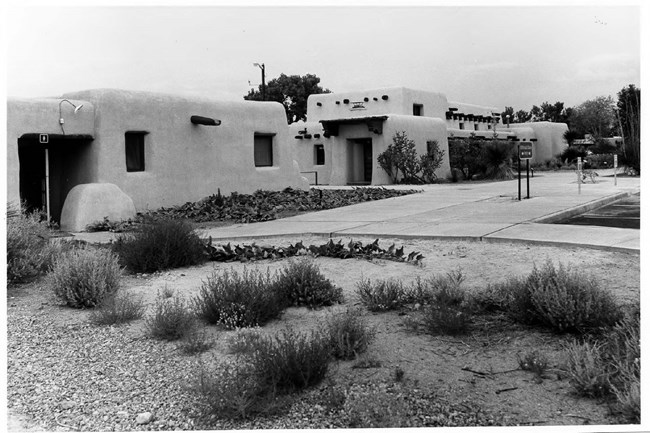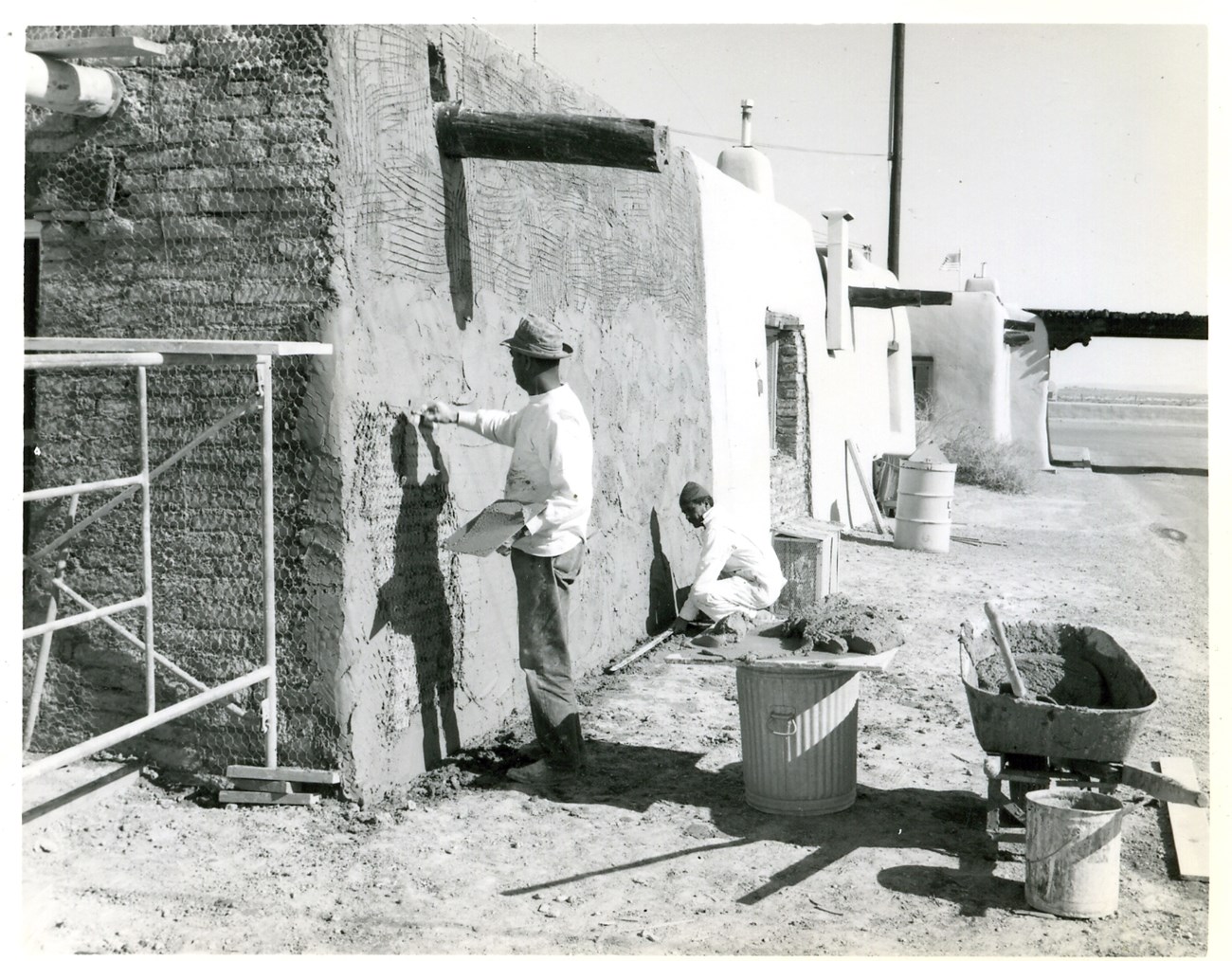Last updated: October 10, 2024
Article
White Sands National Monument Historic District Cultural Landscape
The White Sands Historic District preserves structures and landscape features that are associated with both Pueblo Revival architecture and New Deal public works programs. These include a museum/administration building, a concession area and comfort station, and four residential buildings that house NPS staff. Native plantings and designed landscape features surround these structures, connecting the buildings to the surrounding natural environment.
The period of significance begins in 1933 with the designation of White Sands National Monument and ends in 1940 with the completion of the original structures. Since 1940, additional structures have been built, including a residential building in 1964 and a new administration building in 1997.

NPS / Betsy Swanson
In 2019, White Sands National Monument was elevated to the status of a national park. The park preserves a significant portion of the world’s largest gypsum dune field, a glistening expanse of wave-like dunes that stretch across 275 miles of the Chihuahuan Desert in the Tularosa Basin of southern New Mexico. The landscape has a long human history, which includes the establishment of Apache territory 700 years ago. By the 1500s, Spanish colonizers had entered the region, and permanent Spanish settlements were established by 1850. Today, White Sands National Park is surrounded by the White Sands Missile Range, which was created by the U.S. Military in 1945 as a testing area for missiles and bombs. The White Sands Historic District is located on the east side of the park just northwest of U.S. Highway 70.
Designed by architect Lyle Bennett alongside landscape architect Charles A. Richey, the buildings in the White Sands Historic District are excellent examples of the Pueblo Revival style. Pueblo Revival incorporates elements of traditional Pueblo and Spanish Colonial building styles, including earth tone finishes, flat rooflines, irregular massing and surfaces, and details such as vigas, which are log beams that support the roof. Exposed beam ends projecting beyond the outside wall are a defining characteristic of Pueblo, Pueblo Revival and Spanish Colonial architecture. The walls of the buildings are made of adobe bricks measuring sixteen inches long, ten inches wide and four inches thick. The flat roofs are supported by vigas of exposed pine, and decorative patterns are carved into the corbels on which the vigas rest.

NPS / S. Dolan
Smaller architectural details and landscape features compliment the design of the buildings. Lighting fixtures made of tin and combed glass speak to the influence of trade along the Santa Fe Trail, while the design of benches and picnic structures mimic the rustic qualities of the adjacent buildings. Vegetation native to the Tularosa Basin surrounds the buildings, and the patio is paved with cobblestone that encircles a centrally planted cottonwood tree. Together, these designed landscape and vegetation features express a holistic design vision for the site.

NPS
In addition to preserving significant examples of Pueblo Revival architecture, the White Sands Historic District showcases the legacy of New Deal public works projects in the National Park Service during the 1930s. Through a series of government programs such as the Civil Works Administration (CWA) and the Civilian Conservation Corps (CCC), the National Park Service received an influx of personnel and funding that supported wide-ranging building and conservation projects across NPS-administered lands. Architecturally, this period was defined by a rustic aesthetic that utilized local materials and vernacular styles to create structures that blended into their natural surroundings.
In this context of development, the Pueblo Revival style became a prevalent feature of park service architecture in the Southwest. The buildings in the White Sands Historic District are part of a broader architectural tradition that includes structures such as the Painted Desert Inn at Petrified Forest National Park and the CCC Complex at Bandelier National Monument, both of which were also designed by Lyle Bennett.
Historic District Development


Left image
White Sands National Monument Historic District, ca. 1940.
Credit: NPS
Right image
White Sands National Monument Historic District, 1999.
Credit: NPS
The White Sands Historic District was entered on the National Register of Historic Places in 1988, helping to ensure the preservation of important examples of Pueblo Revival architecture, as well as the craftmanship of CWA workers. In 2002, a Cultural Landscape Inventory (CLI) was completed that expanded upon the original nomination to include features such as vegetation and viewsheds. Today, the historic district remains a hub for visitor experiences at White Sands National Park, where expansive views of the surrounding dune fields extend from the grounds of the buildings.
Quick Facts
-
Landscape Type: Historic Designed Landscape
-
National Register Significance Level: State
-
National Register Significance Criteria: A, C
-
Period of Significance: 1933 – 1940


